
Broadening the Horizons of Grassland Science for the Anthropocene
Semi-natural Grasslands have developed into biodiverse habitats as a consequence of anthropogenic activity, such as extensive agriculture, so they are inextricably linked to the Anthropocene period. In Finland, as in much or the Palaearctic Region, the amount of seminatural grassland habitat (meadow) peaked during the early 19th century. By the late 1800s, a large-scale transition was already underway, with grasslands being converted to fields for the production of arable crops. Now, only small remnants remain of formerly extensive grasslands, and several grassland types, as well as many of their plant and insect species, are highly endangered. Today these habitats are dependent on conservation work by Parks and Wildlife Finland, regional Centres for Economic Development, Transport and the Environment (ELY Centres) and a number of NGOs.
For the historical 20th Eurasian Grassland Conference (EGC XX), we wanted to bring participants to a location that will be novel and exotic for the majority of EDGG members. To fulfil that goal, we are happy to offer you the opportunity to attend the first ever EGC conference in the Nordic region, even taking you to within a stone’s throw of the Arctic Circle. The venue for the conference will be Oulu University, where we will be hosted by the Biodiverse Anthropocenes programme, led my Marko Mutanen. The conference programme will include all of the familiar elements, such as diverse workshops in which you can learn new skills, an icebreaker event, Grassland Party, charity auction, and a diverse range of inspiring plenary presentations from internationally acknowledged experts. Finally, the traditional post-conference excursion will take us to the northeast of Finland. Further details can be found from the First Call.
Upload your presentation via this link.
You can find the plain conference schedule here.
You can find the conference programme here.
You can find the book of abstracts here.
You can find the Post-conference excursion guide here.
Early-bird registration closed on 15th June but normal-price registration is open until 22nd June. Even after that, it is possible to register as a late bird. You will receive an invoice to pay the fees after your registration. If you have any queries, then please feel free to contact us at EGC2025@lists.oulu.fi.
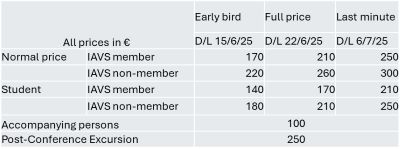
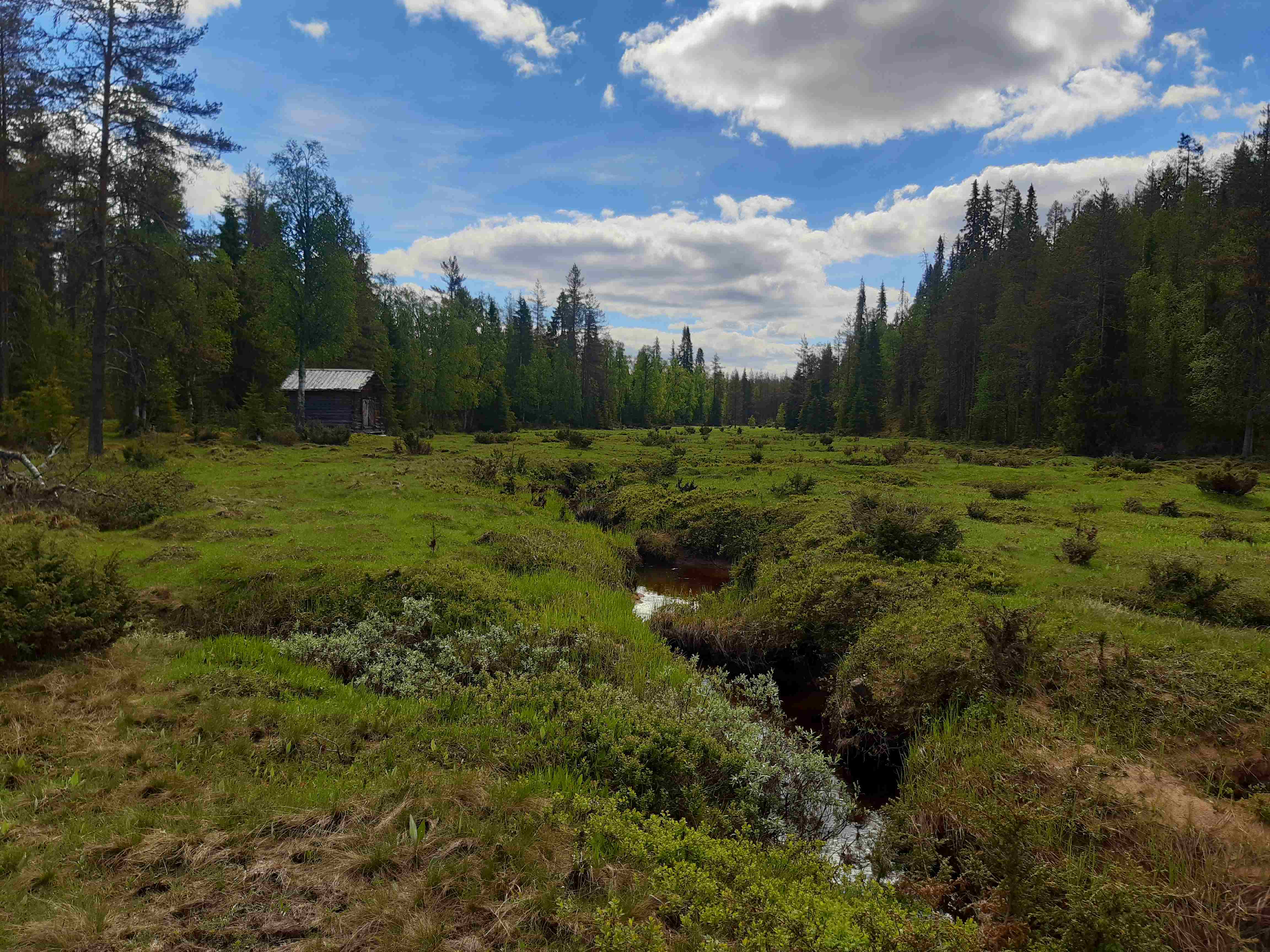
A riparian flood meadow from the Korouoma river valley, Posio, Finland. Photo S. Venn.
Themes of the scientific programme
The main theme of the conference will be “Broadening the Horizons of Grassland Science for the Anthropocene”. This includes both biogeographical and scientific horizons. The programme will include presentations from regions and grassland systems that will hopefully be unfamiliar to many of you. We hope to receive many submissions that challenge our current perceptions and boundaries of grassland science and advances in familiar disciplines, as well as updates on grassland habitats that we have learnt about in previous EGC conferences. The topics of the conference sessions will include Boreal Grasslands, Grassland conservation, Grassland Ecology, Citizen Science, Urban ecology and Genomics. In addition to the more scientific sessions, we will also include sessions on practical aspects of grassland management and conservation, aimed at stakeholders, conservation organizations and other relevant organizations.
Workshops
The conference will commence with three workshops on Sunday 6th July. The topics of these will be:
- Meadow butterflies of northern Finland - given by Marko Mutanen and Harry Nyström
- Metabarcoding - given by Stefan Prost and Majid Moradmand
- Citizen Science - given by Andrea Sforzi.
There will also be a fourth workshop on Monday evening:
4. Scientific writing provided by OIKOS and led by Friederike Gehrmann.
The Meadow butterflies workshop will include a trip in the afternoon to Haaraojan meadow at Kiiminki.
If you are interested to participate in any of these workshops, then please register by sending an email to egc2025@lists.oulu.fi indicating which workshop/workshops you would like to participate in. Remember also to arrange your travel and accommodation so that you will arrive in Oulu on Saturday 5th July or early Sunday morning.
Keynote speakers:
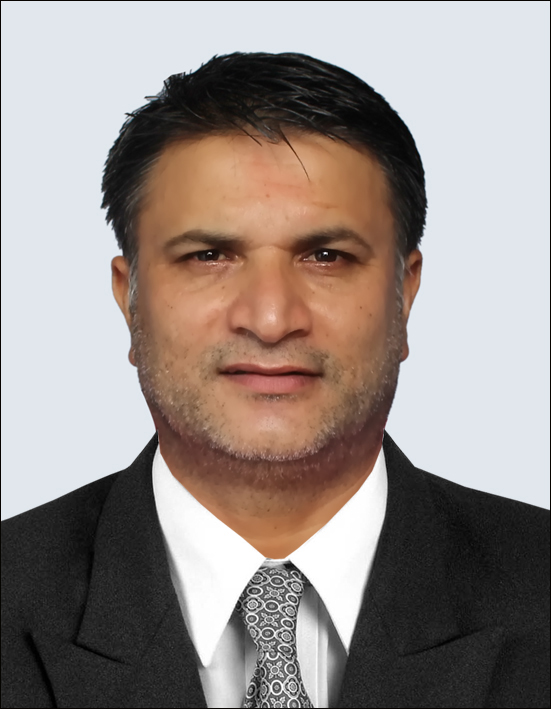
Shanker R. Barsila
Agriculture and Forestry University, Bharatpur, Nepal
Biosketch
Dr. Shanker Raj Barsila, earned a PhD from ETH Zurich, Switzerland, is now an Associate Professor at Agriculture and Forestry University in Nepal. Academic mentoring of high-altitude grazing ecology in the Himalayan Mountain landscapes, primarily on pastoralism, is of great interest to him. He specializes in the study of Himalayan high-altitude transhumant pastoral systems. Long-term yaks and sheep in the transhumance pastoral systems of the Himalayan alpines have been documented as his research contributions. In 2015, the Nepal Academy of Science and Technology honored him with the Young Science and Technology Award in recognition of his innovative study on yaks and yak-cattle hybrids. Dr. Barsila has been actively involved in advancing high-altitude grazing studies to improve mountain herders' livelihoods; his research addresses the challenges faced by pastoral communities by combining traditional knowledge with contemporary scientific methods; and he continues to work with national and international institutions to further research in high-altitude pastoral systems.
Nepal’s Alpine Grasslands: A Legacy at Risk, and a Future to Secure
Abstract
High alpine grasslands in Nepal are unique ecosystems that support local communities' livelihoods, regulate water cycles, and preserve distinctive biodiversity. In addition to providing vital grazing areas for pastoral communities, these grasslands are home to iconic species of wild animals. Despite their ecological benefits, overgrazing, invasive species, climate change, and unsustainable land use practices are posing constant threats to these grasslands. Climatic change is causing shifts in vegetation patterns and increased vulnerability to extreme weather events such as droughts and floods. These shifts disrupt the delicate balance of alpine ecosystems, reducing productivity and affecting species distributions. Livestock overgrazing have been known to further worsen soil erosion, decreases plant diversity, and encourages the spread of alien species. These delicate ecosystems are further threatened by growing infrastructural development and human invasion. The dynamics of climate change consequences, especially in relation to species migration and ecosystem shifts, must be better understood in future research in order to maintain Nepal's alpine grasslands. For grassland management to be sustainable, research on the socioeconomic effects of overgrazing and the function of traditional pastoral practices is essential. Furthermore, in order to inform management techniques, it is essential to research the dynamics of invasive species and their ecological effects. Other important research topics include evaluating adaptive management techniques and looking into the possibilities of community-based conservation methods. Filling in these research gaps could help improve conservation efforts, give local communities sustainable means of subsistence, and guarantee the alpine grasslands of Nepal's long-term resilience.
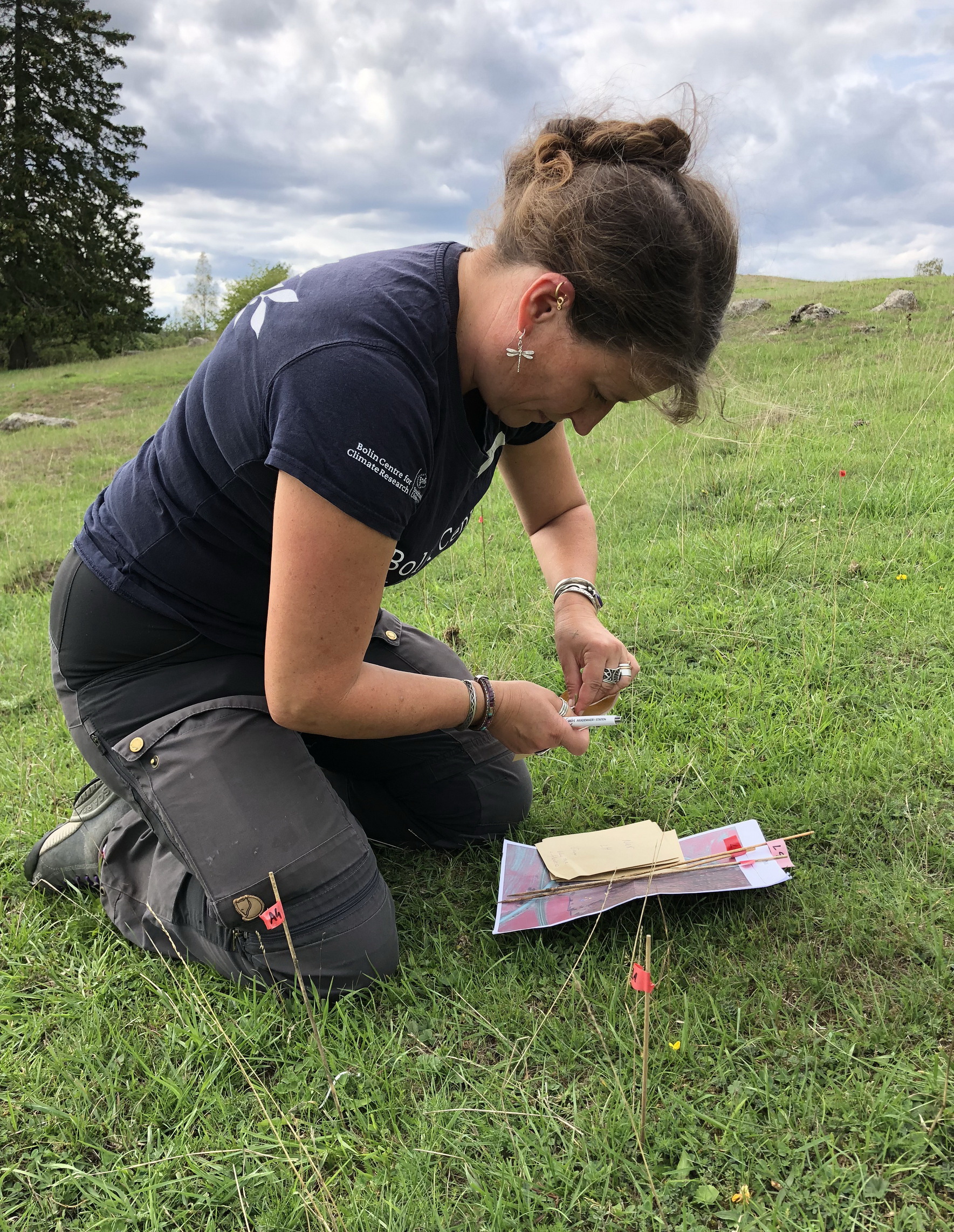
Sara Cousins
Stockholm University, Sweden
Biosketch
I am a plant community ecologist and physical geographer with a focus on biodiversity, habitat fragmentation and conservation. My research focuses on understanding how past and present land use, habitat connectivity, and spatial patterns of landscapes affect present-day biodiversity, especially in grasslands. One key contribution has been in studying how landscape processes influences species dispersal and persistence, how habitat loss and isolation affects plant species, and exploring how ecological restoration efforts can replicate historical processes to support biodiversity. I’ve a diversity of methods like historical maps, remote sensing, species inventories and genetic analyses to try an unravel these processes.
Tracing the past to preserve biodiversity for the future: exploring past grassland extent, present-day patterns, and the role of people in conservation
Abstract
My talk covers three themes: exploring past grassland extent, present patterns, and the role of people and their livestock. Global threats to plant diversity vary in scale and can interact, amplifying or mitigating their effects. Habitat alterations and landscape change endanger species-rich grasslands directly and indirectly when isolated plant populations become increasingly isolated from both pollinators and dispersal vectors.
To protect and restore grassland plant diversity today, it is necessary to understand the extent and timing of major habitat changes in the past. Many grassland plants are long-lived and take time to disappear, so plant communities can respond slowly to change a so-called 'time lag' or 'extinction debt'. On the positive side, it may be possible to reverse detrimental changes while the plants and seeds are still around.
I have explored habitat change effects on grassland plant communities by combining methods across different biodiversity scales—genetic analyses, field experiments, and landscape studies using historical maps, aerial photos, and modeling. Each approach has challenges, which I’ll discuss to help others avoid similar pitfalls.
Conserving fragmented grasslands requires understanding functional connectivity and plant dispersal between isolated habitats. Ecologists often prioritize spatial data, overlooking the role of people, livestock, and management in shaping species-rich landscapes. A key question remains: Can grassland biodiversity be preserved and restored with only a few managers?
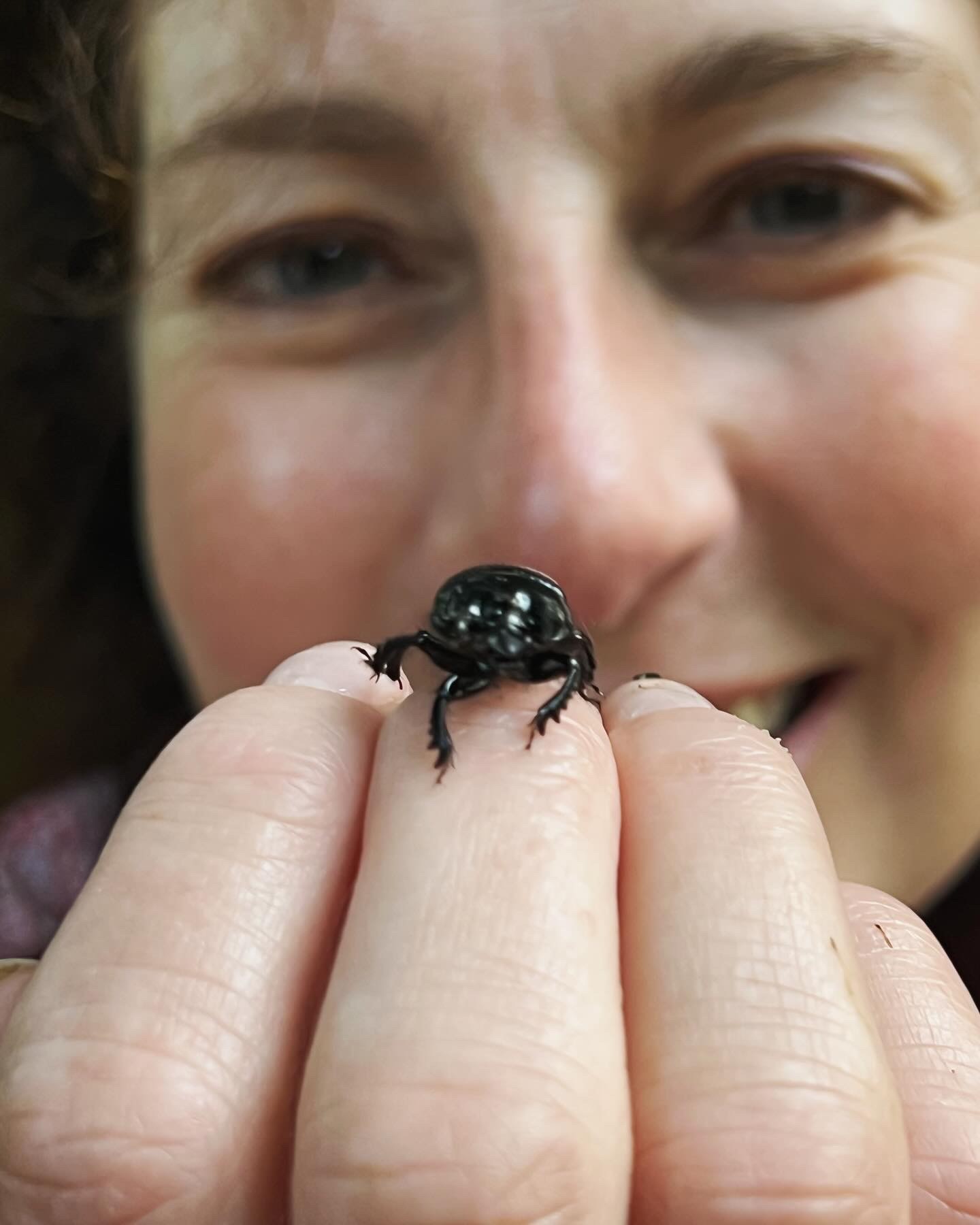
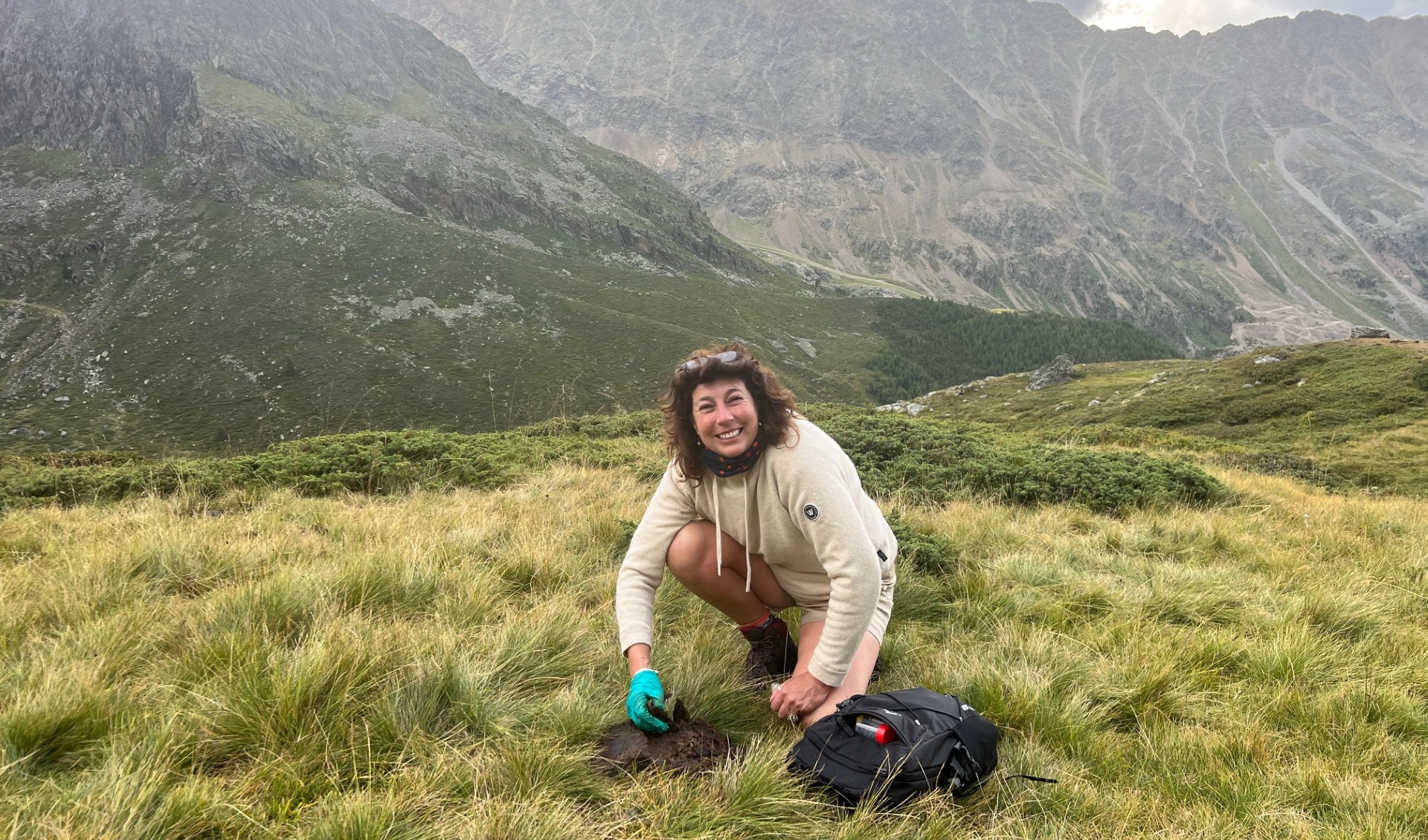
Sally-Ann Spence
Oxford University Museum of Natural History, United Kingdom
Biosketch
Sally-Ann Spence is a scientist, presenter, farmer, entomologist and a Fellow of both the Royal Entomological Society and the Linnaean Society.
She specialises in dung beetles and pastureland biodiversity and founded the U.K. Dung Beetle Mapping Project accumulating species data. Her work with the project has seen her surveying field sites all over the U.K. including many outlying islands enabling her to study a multitude of grazing systems.
This practical experience has been translated into collaborative projects working on sustainable land management plans within the farming community to promote dung beetles as important bio-indicators for soil, pasture and livestock health.
Sally-Ann was awarded the British Entomological and Natural History Society’s gold medal for over two decades of promoting dung beetle awareness and her research into dung beetles and the livestock sector. A founding member of Dung Beetles for Farmers, which was formed to continue the awareness of this insect group and highlight their conservation, she provides dung beetle workshops, training days, surveys and advisory services.
Sally-Ann owns and runs an educational research centre ‘Berrycroft Hub’ based on her family farm where she has cattle and sheep and manages all the grassland.
As a passionate advocate of British farming and biodiversity, Sally-Ann does a great deal of scientific public outreach both at her centre on the farm, at various events and on all media platforms including television.
The love of dung beetles & the inadvertent restoration of calcareous grassland
Abstract
Just how important are dung beetles in our livestock systems and what are they doing beyond removing dung? We generally don’t think of the tiny insect communities based around the dung piles in our pastures and these include our dung beetles. But what if we loose these beetles? What effect would it have on our livestock, pastures, soil and farm biodiversity? To answer these questions and more, Sally-Ann started to farm livestock around dung beetles implementing small changes in her management decisions that had much wider benefits for the landscape, livestock and biodiversity in general. From this grew a project that saw her inadvertently restoring calcareous grassland and finding ever more unconventional ways of putting dung beetles in the limelight.
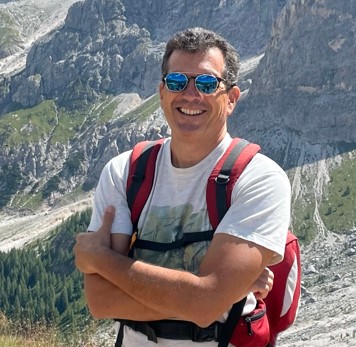
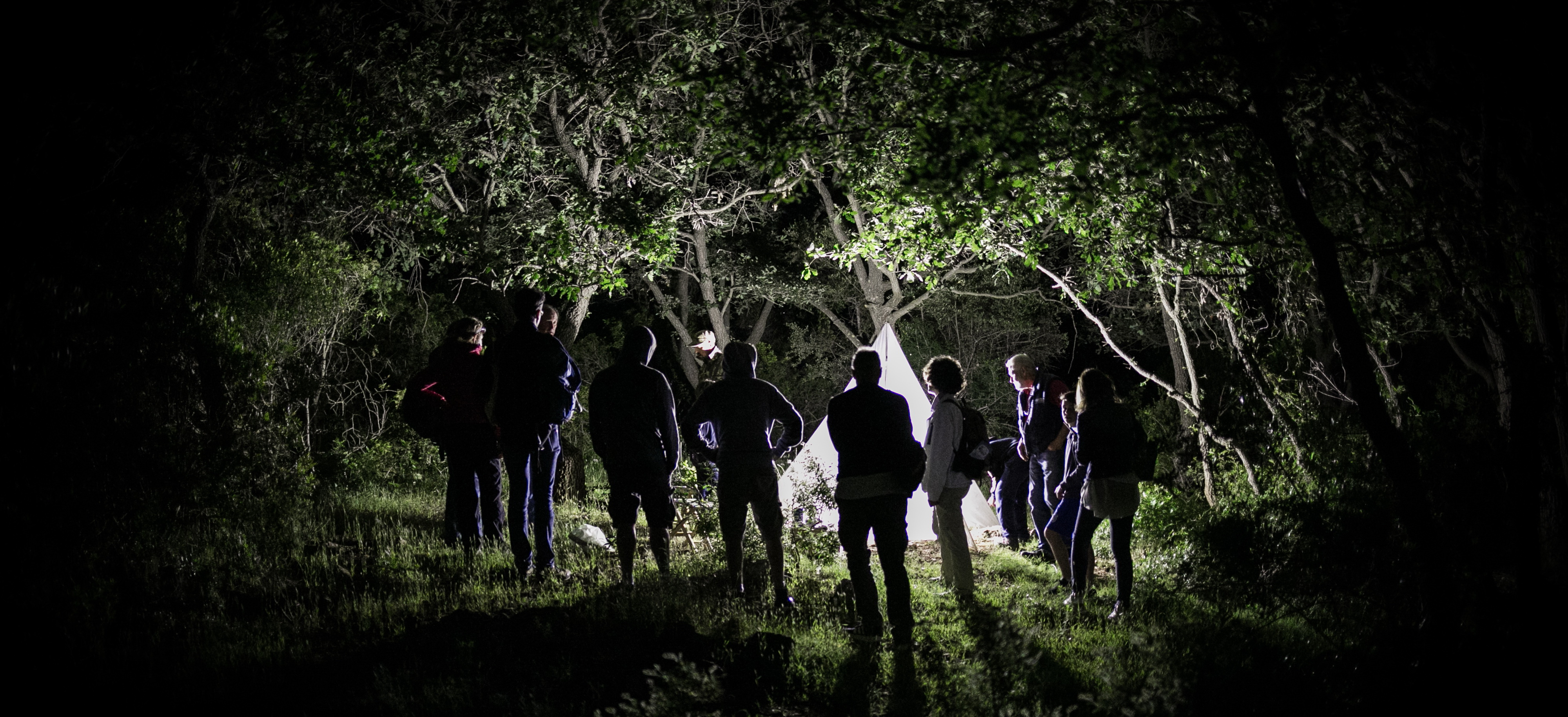
Andrea Sforzi
Maremma Natural History Museum, Grosseto, Italy
Biosketch
Andrea Sforzi has a PhD in evolutionary biology, is the Director of the Maremma Natural History Museum (Tuscany). He is the scientific manager of the national Osprey project and the Wildcat project in Italy, carried out in collaboration with ISPRA and the Ministry of the Environment, in the framework of the National Biodiversity Network. He has been involved in citizen science since 2011, when the collaboration with highly successful the OPAL (UK) project started. Since then, he organises bioblitzes, field toolkits, surveys, training courses and other CS initiatives. He was among the founders of the European Citizen Science Association (ECSA) and has been a member of the Board of Directors from 2014 to 2020. Since 2016 he is a member of a panel of experts for the selection of Citizen Science projects in Austria, in the framework of the Top Citizen Science (TCS) initiative. In 2023 he was appointed in the international Jury of the European Commission for the first "European Union Prize for Citizen Science". He is among the founding members (and currently President) of the Citizen Science Italia association. He is the representative for Italy in the Working Group "Science Communication" in the framework of the G7. Since April 2024 he is coordinating the working group “Citizen Science” of the National Biodiversity Future Center (NBFC), funded by the National Recovery and Resilience Plan in Italy.
Involving citizens in doing science: how collaborative research is changing the interface between science and society
Abstract
...
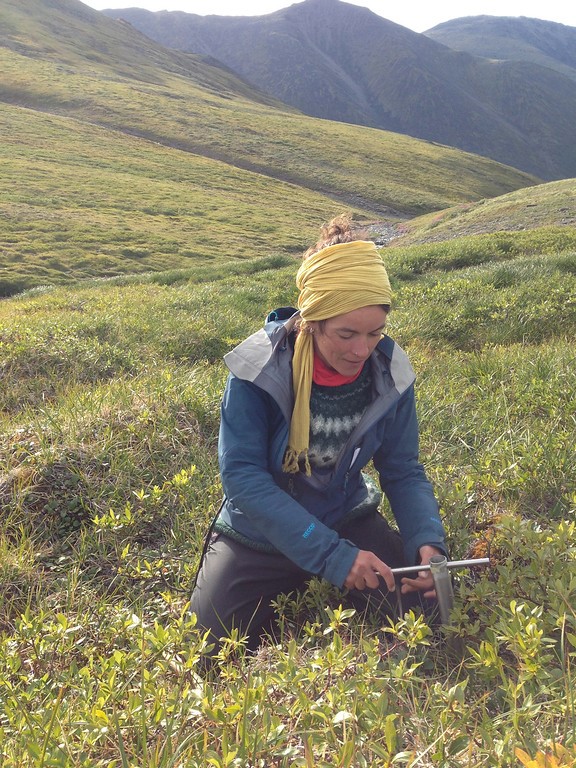
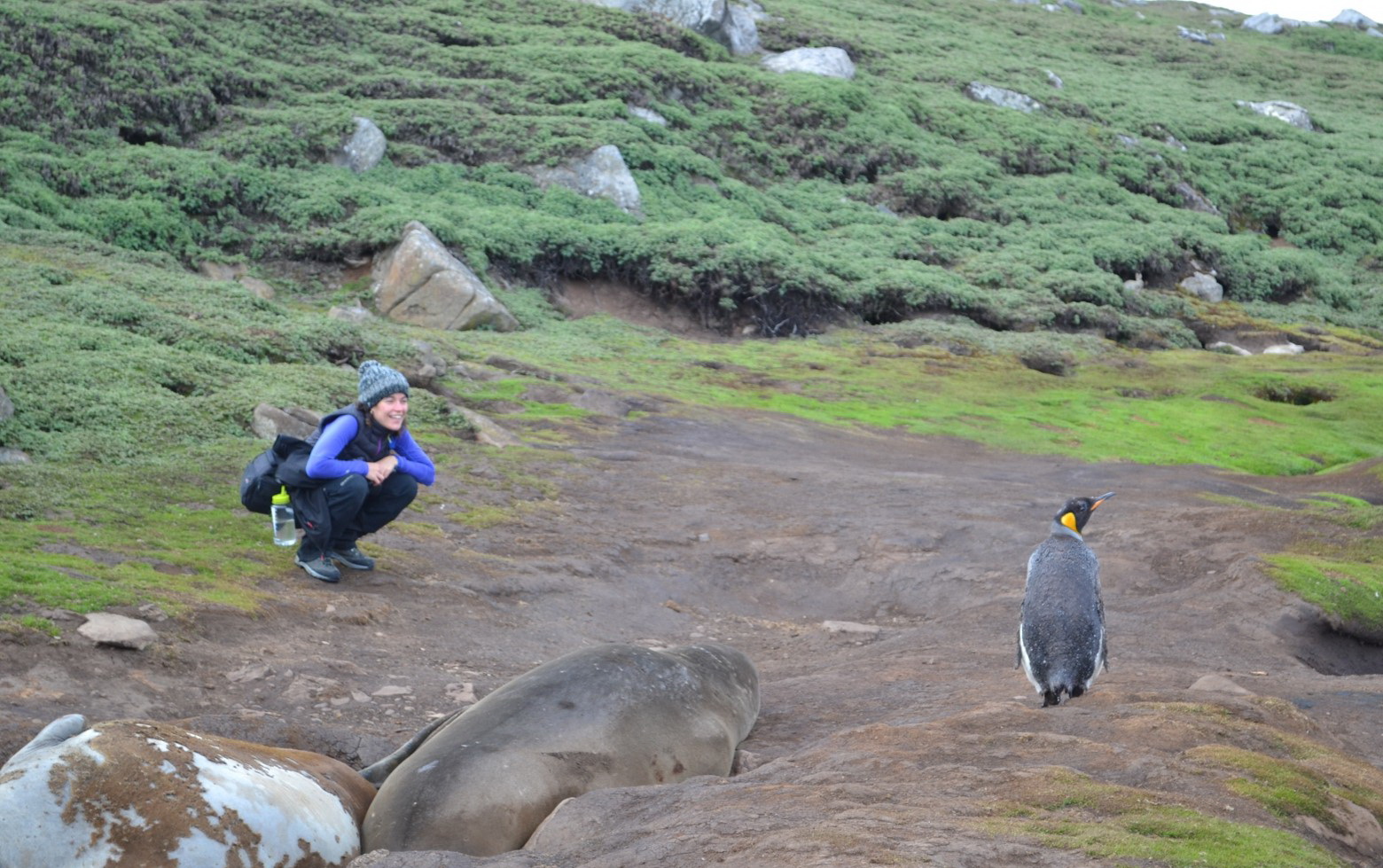
Isabel C. Barrio
Agricultural University of Iceland, Iceland
Biosketch
I am Professor at the Faculty of Environmental and Forest Sciences at the Agricultural University of Iceland. Isabel is a terrestrial ecologist, and her research interests relate to plant-herbivore interactions in tundra ecosystems. Isabel leads two international research networks: the Herbivory Network that aims at understanding the role of herbivores in changing tundra ecosystems, and the Nordic Borealization Network, which investigates the drivers, patterns and processes associated with the borealization of tundra ecosystems. Isabel’s research in Iceland focuses on the impacts of sheep grazing on common highland ranges. Isabel obtained her PhD on management of native rabbit populations in agricultural landscapes of Southern Spain in 2010 and worked as a postdoctoral researcher at the University of Alberta (Canada) between 2011-2014 and the University of Iceland between 2015-2018. She teaches courses on ecology, conservation biology and grazing management at the graduate and undergraduate level and is actively involved in supervising students.
Treeless ecosystems in the North: role of climate and land use change in shaping the past and future of the region
Abstract
The colder regions of the planet are characterized by treeless environments. Tundra ecosystems cover vast regions at high latitudes and high elevations globally, but are threatened by ongoing climate and land-use changes. As a result of warming temperatures, species typical of southern latitudes and lower elevations are spreading north and upward, a process known as borealization. The borealization of tundra ecosystems can be manifested in different ways, from advances in treeline and range expansions of boreal herbivores, to more subtle increases in encroachment of tall shrubs. This shift in the boundary between the boreal forest and the tundra biome implies large structural changes, which will have wide-ranging consequences for the functioning of these ecosystems, from feedbacks to regional climate, changes in biodiversity and trophic dynamics and impacts to local livelihoods.
Given the key role of herbivores, and more specifically megafauna, in maintaining extensive and highly productive grasslands during the Pleistocene, the so-called “mammoth steppe”, it has been suggested that grazing management could be a tool to mitigate some of the ongoing trends and preserve tundra ecosystems. During this presentation, I will highlight some of the ongoing work of two international research initiatives, the Herbivory Network and the Nordic Borealization Network, to coordinate research across this region and increase our understanding of the functioning of these cold ecosystems.
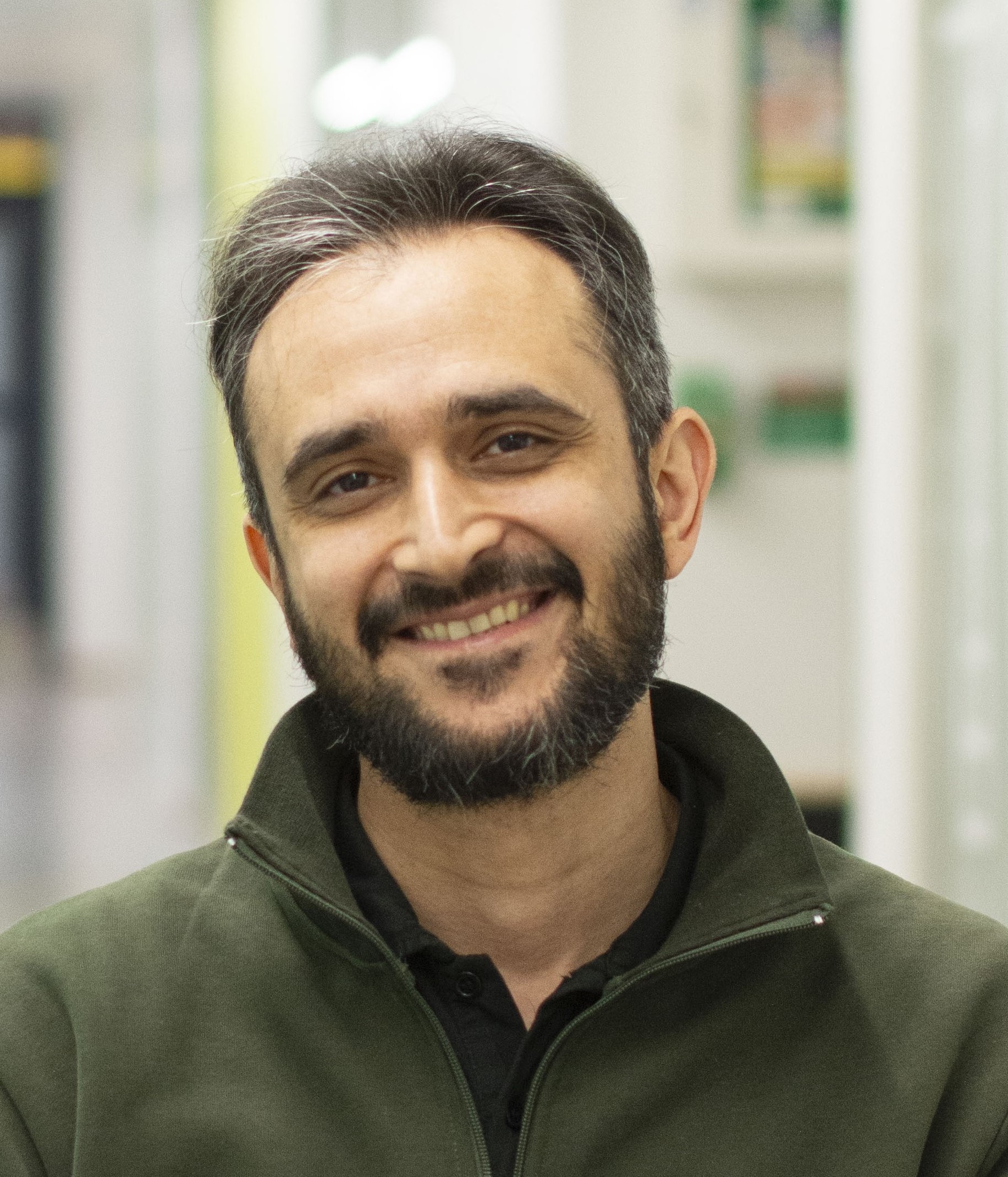
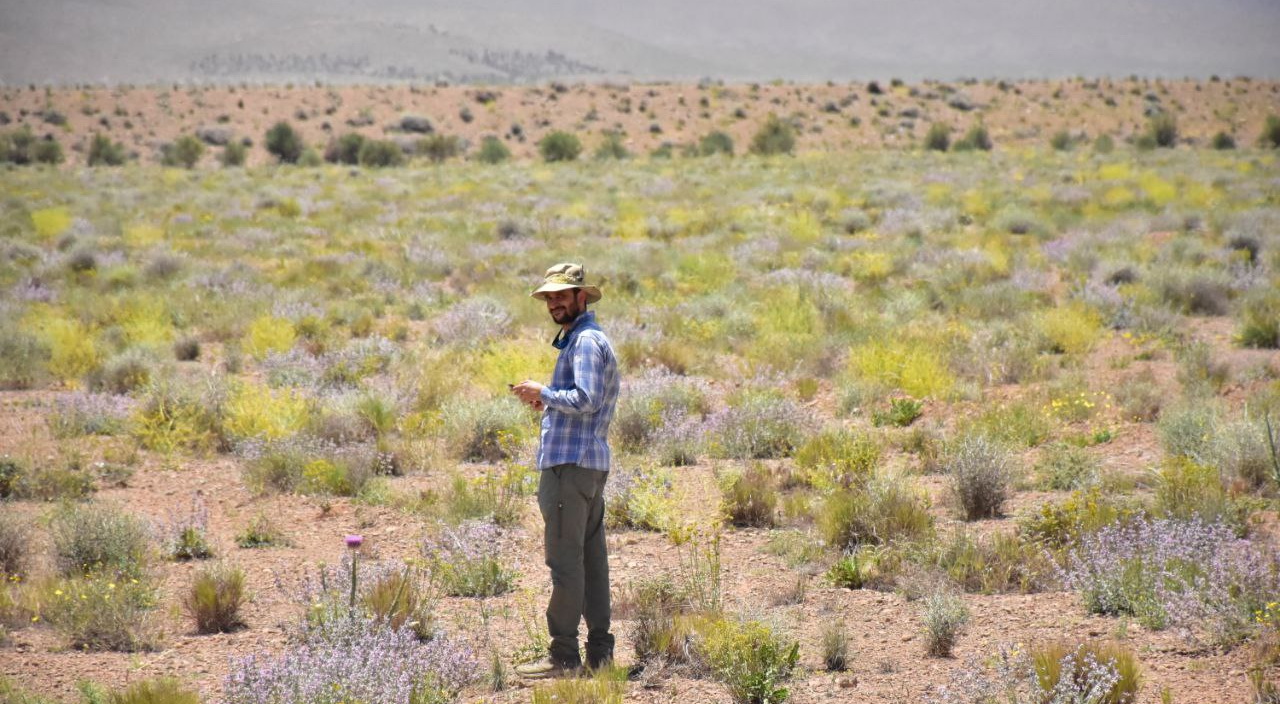
Majid Moradmand
Oulu University, Finland
Biosketch
I earned my Ph.D. in Biology–Zoology from Goethe University and the Senckenberg Research Institute in Frankfurt am Main, Germany. Currently, I serve as an Associate Professor at the University of Isfahan in Iran, a Guest Professor at Trier University in Germany, and, more recently, as a Senior Project Researcher at the University of Oulu.
My research is closely tied to Natural History Museums, with a primary focus on arthropods. Over the years, I have developed a deep appreciation for the vital role scientific collections play in advancing biodiversity research. By integrating historical and environmental DNA analysis, high-throughput sequencing technologies, and advanced bioinformatics, my work seeks to bridge classical museum curation with modern genomic approaches. The overarching aim is to support biodiversity discovery, reconstruct interaction networks, biomonitoring, and habitat restoration.
Spiders in grasslands: using eDNA metabarcoding to reconstruct spider trophic guilds and arthropod communities
Abstract
Arthropods are the most diverse group of animals and play a key role in terrestrial ecological networks. Arthropod biodiversity is declining worldwide, and a massive decline of arthropods in European grasslands and forests has recently been reported. Spiders are the main arthropod predators in grasslands, where they have a critical impact on insect populations. Therefore, understanding trophic interaction networks through novel methodologies is crucial.
When an organism interacts with its environment and other organisms, it leaves behind a trace of its DNA, known as environmental DNA (eDNA). Arthropod eDNA can be recovered from a variety of environmental samples, such as plant compartments and spider gut contents. In recent years, the eDNA metabarcoding approach has revolutionized our understanding of biodiversity assessment, ecological interaction networks, and biomonitoring. Through a series of case studies, I will present recent results focusing on plant-arthropod interactions and reconstructions of spider trophic guilds by analyzing the spider web and gut content.
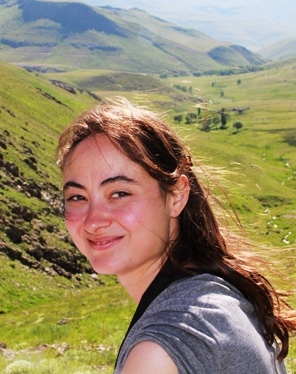
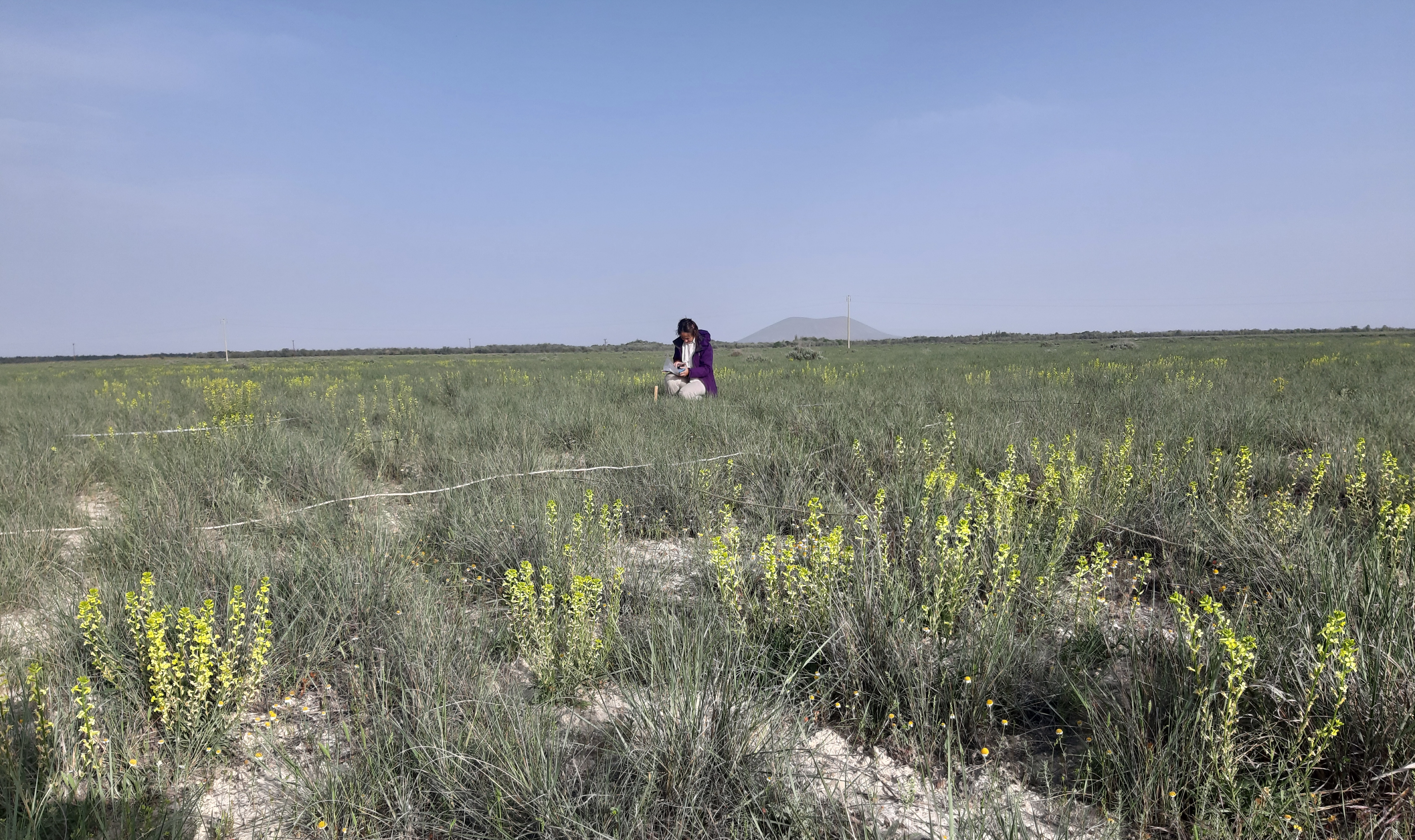
Didem Ambarlı
Middle East Technical University, Ankara, Türkiye
Biosketch
Dr. Didem Ambarlı is an ecologist and conservation scientist with over two decades of experience in biodiversity research, particularly in temperate grasslands and steppe ecosystems. She currently serves as an Assistant Professor at METU, where her research focuses on the spatial and temporal dynamics of biodiversity along land-use gradients and their implications for ecosystem functioning.
Her work integrates field-based biodiversity assesments—spanning plants, birds, and butterflies—with multivariate statistics, GIS, and conservation planning tools. Dr. Ambarlı has a special interest in socio-ecological systems and frequently incorporates land-use histories and stakeholder perspectives into her ecological analyses.
She has held academic and research positions in Germany (Technical University of Munich), the UK (University of Cambridge), and across Turkey, contributing to national and international conservation projects. Notably, she is a long-standing executive committee member of the Eurasian Dry Grassland Group (EDGG) and has co-organized multiple Eurasian Grassland Conferences.
Dr. Ambarlı has authored or co-authored over 60 scientific publications, including high-impact papers in Nature, Ecological Monographs, and Journal of Vegetation Science. Her research has been recognized through multiple fellowships and awards.
A strong advocate for applied conservation, she has also led major projects funded by national and international bodies, aiming to integrate biodiversity science into land management and policy.
Rethinking Degradation: Diversity, Grazing, and Conservation in Anatolia’s Ancient Grasslands
Abstract
Dry grasslands in Anatolia have one of the longest histories of human land use in the world. Shaped by more than 10,000 years of continuous interaction, these landscapes offer few clues about their original, natural state—whether grasslands or adjacent woodlands. As a result, understanding their potential vegetation, biodiversity, and ecological dynamics presents a significant challenge for researchers. Long-standing assumptions, such as the idea that lowland Artemisia dwarf shrub steppes or slope-dwelling, cushion-forming Astragalus thorn steppes are the result of degradation due to overgrazing, deserve critical re-examination. Located within the Irano-Anatolian Biodiversity Hotspot, these grasslands are exceptionally rich in endemic plants and butterflies, yet their diversity patterns remain an ecological puzzle. Recent quantitative studies across various grassland types reveal extremely high species turnover over short distances. Alpha diversity peaks notably in ecotones, while conventional vegetation surveys fall too short in representing the community diversity at the gamma scale.
Contrary to the meta analyses on grazing effects under dry conditions, moderate grazing appears to support higher levels of diversity. In contrast, the cessation of grazing often leads to the dominance of Stipa species, resulting in species-poor communities. Similarly, large-scale afforestation—the primary conservation strategy in many semi-arid regions—tends to reduce plant and bird diversity, though butterfly communities appear less affected. To preserve the unique biodiversity of Anatolia’s dry grasslands, conservation strategies must move beyond afforestation and embrace steppe-specific approaches tailored to these ancient, dynamic landscapes.
Travel
If you would like to travel overland and/or overwater, Oulu has economic connections with NE Europe and as far as Poland by coach, such as Flixbus. There are ferry connections, operated by Wasaline, with Sweden, via the port city of Vaasa. For travel within Finland, the main options are rail connections, operated by VR, and coach services to Oulu can be checked from Matkahuolto and are also offered by Onnibus. Within the city of Oulu, there are good public transport services, and you can check routes and timetables from Oulun seudun liikenne OSL, and the easiest way to buy tickets is if you download their App.
Whilst we try to favour low-carbon policies in the EDGG, we recognise that most participants in EGC2025 will use flights for at least part of their journeys. Oulu has an international airport with good access to the city, which has direct flights from Munich and a small number of other European locations. Most participants from international locations will have to travel via Helsinki-Vantaa airport, which is 600 km south of Oulu. There are several flights per day from Helsinki to Oulu, and there are also overland connections via train and bus, though the train journey generally takes around 6.5 hours.
As per previous years, travel grants provided by the International Association for Vegetation Science IAVS will be available for IAVS members with financial constraints. If you would like to apply for a travel grant then please complete the Travel Grant Application Form and submit it by 15th June. If you need an early decision because of a visa application, for instance, then pleaase indicate that in your motivation letter. For urgent cases, we will provide the decision as soon as possible after the 15th.
For information about air travel after the post-conference excursion, please refer to the information about the excursions below.
Accommodation
Hotel accommodation
Oulu has a diverse range of hotel accommodation options, many of which are within easy reach of the conference venue, though there will be other conferences and events in early July, so the demand for hotels will be high, so we recommend making your reservations in good time. The following hotels offer favourable rates for EGC2025 participants, subject to availability: De Gamlas Hem, Greenstar hotel, Original Sokos Hotel Arina, Hotel Lasaretti, Radisson Blu Hotel Oulu, Best Western Hotel Apollo.
Group accommodation
There are also possibilities of economical accommodation for groups. Nallikari is a holiday village adjacent to beaches and located 5.5 km from the conference venue, which takes 11 minutes by car or 1 hour and 15 minutes to walk. There are also direct (18) and indirect bus connections. It is also possible to rent bicycles from the reception and by bicycle the journey takes 20 minutes. Nallikari offers cottage studios for 1-5 people and Poiju Villas for 4+2 people. If you would like to take advantage of this offer, please contact them by 3rd June at the latest.
Also Hostel Cafe Huvila offers female, male and mixed dormitories for 6 people.
Excursions
Mid-conference Excursion
The mid-conference excursion will take us to the island of Hailuoto, which lies in the Gulf of Bothnia at a distance of 53 km from the city of Oulu. Hailuoto includes some notable wetlands, including Kirkkosalmi, which is renowned as a valuable birding sites. The soil of Hailuoto is mainly sandy and clay-sandstone. The highest point of the island, at 31m a.s.l., is situated on a 15 km long esker ridge that runs across the island, which also has some paraboloic dunes. The most diverse habitats on Hailuoto are coastal meadows and dry heath forests, some of which are dominated by lichens. We will visit a variety of grassland habitats, see some restoration projects and grazing of natural pastures. Transportation to Hailuoto will be via coach and a ferry connection to the island itself. At the end of the afternoon, transportation will be provided to the venue of the Grassland Party.
Post-Conference Excursion
The Post-Conference Excursion will take us to the Oulanka National Park, which is located near the town of Kuusamo, in Kainuu, NE Finland. We will stay at Oulu University’s Oulanka Research Station and visit a diverse range of grassland habitats, as well as bog meadows, which are peat-bogs that have been managed for hay production. In the evening, there will be an opportunity to enjoy a relaxing sauna and a refreshing dip in the river. There will also be an opportunity to visit the nearby Visitors Centre of the park. The National Park is located along the Oulanka and Kitka river valleys, and it is well-known for the Bear’s Round (Karhunkierros) hiking trail, which will take us to sites along the river. There will also be a possibility of canoeing to some of the sites.
The landscape here is dramatically different from that in the Oulu region, being rugged and rocky, with dramatic hills and canyons. The river valleys are sandy, and there are a variety of wet and dry riparian flood meadows along the meandering rivers. The river valleys are typically bounded by rocky outcrops, which can rise to as much as 380 m a.s.l. There are a number of dramatic canyons and rapids along the River Oulanka in particular. In addition to wet and dry riparian flood meadows, there are also bog meadows and mineral meadows. The area is renowned for it’s orchids, including the Venus's slipper (Calypso bulbosa) and the Lady’s Slipper (Cypripedium calceolus). The meadows of this region are generally dominated by globeflower (Trollius europaeus). Other typical plant species include Dianthus superbus, Silene tatarica, Erigeron acris subsp. Decoloratus and Elymus alaskanus, as well as various species of moonwort (Ophioglossaceae). This region is also notable for insects. The green snaketail dragonfly Ophiogomphus Cecilia occurs abundantly along the river. The violet copper (Lycaena helle), which you can see in the conference logo, a butterfly of semi-natural grasslands which has declined dramatically throughout Europe, and is included in the EU Habitats Directive Annex II and Annex IV, can still be seen in Oulanka. Also a number of regionally rare beetle species occur here.
The post-conference excursion will end in the early afternoon of Sunday 13th July. There are a number of options regarding departures. We should be back at Oulu airport by about 15:00. If there are doubts regarding your connecting flights, then please contact us. It is also possible to depart from Kuusamo airport on Sunday morning. It is also possible to depart from Rovaniemi airport, which has direct connections to some European destinations. For this purpose it will be possible to take a pre-arranged taxi from Ranua to Rovaniemi. If you would like to use this option, then please inform us as soon as possible.

Photos M. Peregrym & S. Venn.
